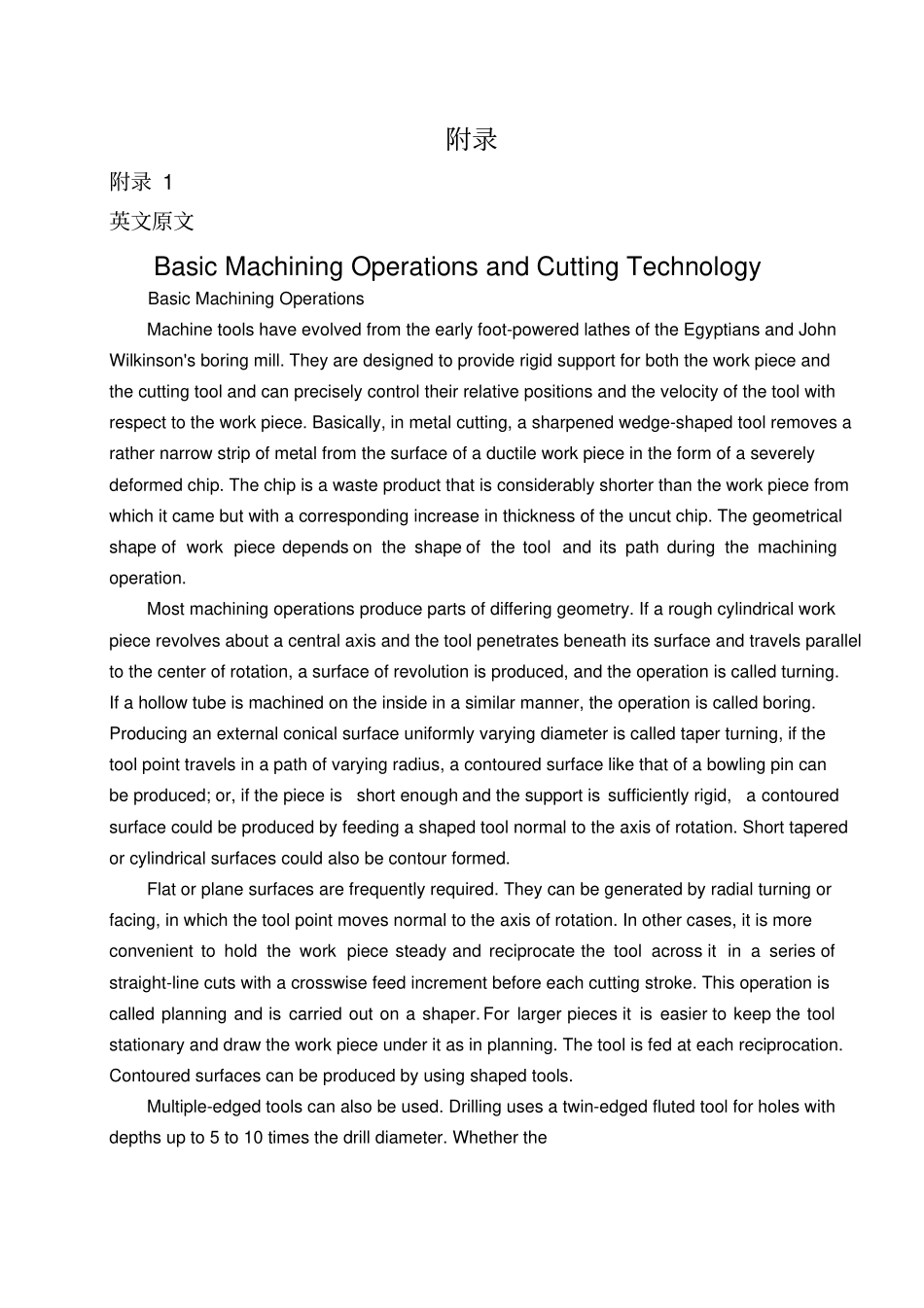附录附录 1 英文原文Basic Machining Operations and Cutting Technology Basic Machining Operations Machine tools have evolved from the early foot-powered lathes of the Egyptians and John Wilkinson's boring mill. They are designed to provide rigid support for both the work piece and the cutting tool and can precisely control their relative positions and the velocity of the tool with respect to the work piece. Basically, in metal cutting, a sharpened wedge-shaped tool removes a rather narrow strip of metal from the surface of a ductile work piece in the form of a severely deformed chip. The chip is a waste product that is considerably shorter than the work piece from which it came but with a corresponding increase in thickness of the uncut chip. The geometrical shape of work piece depends on the shape of the tool and its path during the machining operation. Most machining operations produce parts of differing geometry. If a rough cylindrical work piece revolves about a central axis and the tool penetrates beneath its surface and travels parallel to the center of rotation, a surface of revolution is produced, and the operation is called turning. If a hollow tube is machined on the inside in a similar manner, the operation is called boring. Producing an external conical surface uniformly varying diameter is called taper turning, if the tool point travels in a path of varying radius, a contoured surface like that of a bowling pin can be produced; or, if the piece is short enough and the support is sufficiently rigid, a contoured surface could be produced by feeding a shaped tool normal to the axis of rotation. Short tapered or cylindrical surfaces could also be contour formed. Flat or plane ...


